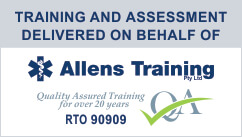Provide First Aid – Top Ten Tips
First aid is the life saving, critical help given to an injured or a sick person before medical aid arrives. This timely assistance, comprising of simple medical techniques, is most critical to the victims and is, often, life saving. Any layperson can be trained to administer first aid, which can be carried out using minimal equipments.
Bleeding nose
A nosebleed occurs when blood vessels inside the nose break. Because they’re delicate, this can happen easily. When this happens, lean slightly forward and pinch your nose just below the bridge, where the cartilage and the bone come together. Maintain the pressure for 5 to 15 minutes. Pressing an ice pack against the bridge can also help. Do not tilt your head back if your nose bleeds as you may swallow blood which can potentially go in your lungs. If the bleeding doesn’t stop after 20 minutes or if it accompanies a headache, dizziness, ringing in the ears, or vision problems, please consult a health expert.
A Sprain
Sprains occur when the ligaments surrounding a joint are pulled beyond their normal range. Sprains are often accompanied by bruising and swelling. Alternately apply and remove ice every 20 minutes throughout the first day. Wrapping the joint with an elastic compression bandage and elevating the limb may also help. Stay off the injury for at least 24 hours. After that, apply heat to promote blood flow to the area. If the injury doesn’t improve in a few days, you may have a fracture or a muscle or ligament tear so call a doctor.
A Burn
If there’s a burn place it under cool (not cold) running water, submerge it in a bath and loosely bandage a first- or second-degree burn for protection. Do not put an ice pack on major burns. Ice can damage the skin and worsen the injury. Don’t pop blisters. Don’t apply an antibiotic or butter to burns as this can breed infection. First-degree burns produce redness while second-degree burns cause blisters and third-degree burns result in broken or blackened skin. Rush to doctor if the victim is
coughing, has watery eyes, or is having trouble breathing.
Choking
True choking is rare but when a person is really choking, he can’t cough strongly, speak, or breathe, and his face may turn red or blue. For a victim of age one or older have the person lean forward and, using the palm of your hand, strike his back between the shoulder blades five times. If that doesn’t work, stand behind the victim, place one fist above the belly button, cup the fist with your other hand, and push in and up toward the ribs five times. If you’re alone, press your abdomen against something firm or use your hands. Do not give water or anything else to someone who is coughing.
Poisoning
Potential household hazards include cleaning supplies, carbon monoxide and pesticides. Bites and stings can also be poisonous to some people. If a person is unconscious or having trouble breathing, call the doctor. Do not wait until symptoms appear to call for help. And don’t try to induce vomiting. The poison could cause additional damage when it comes back up. The victim shouldn’t eat or drink anything in case of suspected poisoning.
Animal Bites
In case of an animal bite, stop the bleeding by applying direct pressure until it stops. Gently clean with soap and warm water. Rinse for several minutes after cleaning. Apply antibiotic cream to reduce risk of infection, and cover with a sterile bandage. Get medical help if the animal bite is more than a superficial scratch or if the animal was a wild or stray one, regardless of the severity of the injury.
Bruises
Ice the area on and off for the first 24-48 hours. Apply ice for about 15 minutes at a time, and always put something like a towel or wash cloth between the ice and your skin. Take a painkiller if there is pain. Visit your doctor if the bruise is accompanied with extreme pain, swelling or redness; if the person is taking a blood-thinning medication or if he /she cannot move a joint or may have a broken bone.
Diarrhea
During diarrhea its essential to treat dehydration. Give an adult plenty of clear fluid, like fruit juices, soda, sports drinks and clear broth. Avoid milk or milk-based products and caffeine while you have diarrhea and for 3 to 5 days after you get better. Milk can make diarrhea worse. Give a child or infant frequent sips of a rehydration solution. Make sure the person drinks more fluids than they are losing through diarrhea. Have the person rest as needed and avoid strenuous exercise. Keep a sick child home from school and give banana, rice, apple and toast. For an adult, add semisolid and low-fiber foods gradually as diarrhea stops. Avoid spicy, greasy, or fatty foods.
Eye Injury
If there is chemical exposure, don’t rub your eyes. Immediately wash out the eye with lots of water and get medical help while you are doing this. Do not bandage the eye. If there has been a blow to the eye apply a cold compress, but don’t put pressure on the eye. If there is any bruising, bleeding, change in vision, or if it hurts when the eye moves, see a doctor right away. For a foreign particle in the eye – don’t rub the eye, pull the upper lid down and blink repeatedly. If particle is still there, rinse with eyewash. If this too doesn’t help, see your doctor.
